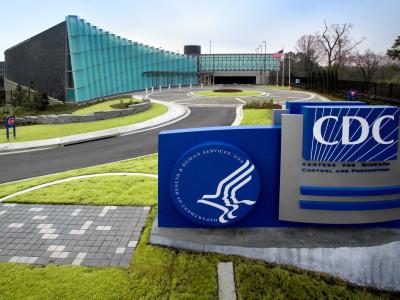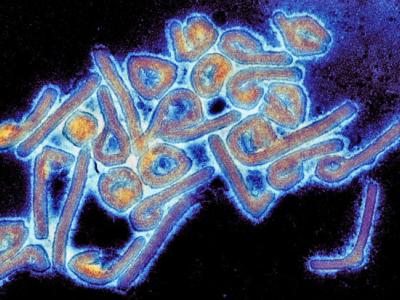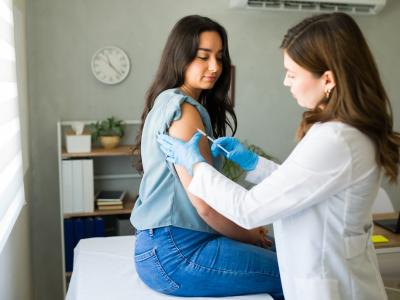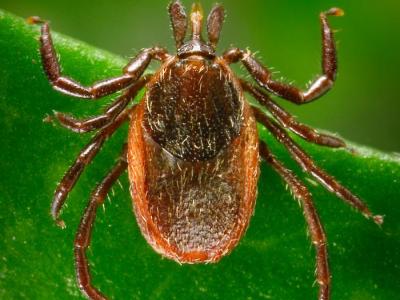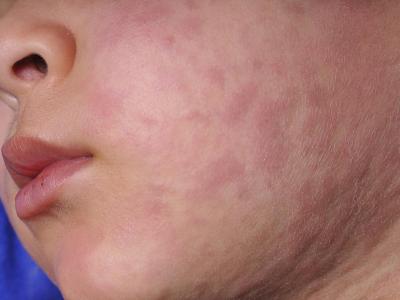Study supports shorter antibiotic course for pneumonia in children
A study of children hospitalized for community-acquired pneumonia (CAP) found that a shorter course of antibiotics did not increase the odds of treatment failure compared with a longer course, US researchers reported today in the Journal of the Pediatric Infectious Diseases Society.
The retrospective cohort study looked at children older than 6 months who were hospitalized with CAP at the Johns Hopkins Hospital from 2012 through 2018. Guidelines at the hospital have recommended 5 days of antibiotics for children with CAP since 2012, based on published data in the adult population, but variability in prescribing still exists.
To evaluate whether children who received a shorter course of antibiotics are at increased risk of treatment failure, the researchers compared their outcomes with those of children who received a prolonged course. Treatment failure was a composite of unanticipated emergency department visits, outpatient visits, hospital readmissions, or death within 30 days of discontinuing antibiotics.
Of the 439 patients included in the study, 168 (38%) received short-course therapy (median, 6 days), and 271 (62%) received prolonged-course therapy (median, 10 days). Overall, 20 children (4%) experienced treatment failure, and there was no difference in treatment failure between the children who received short-course (3%) versus prolonged-course (6%) therapy (odds ratio [OR], 0.48; 95% confidence interval [CI], 0.18 to 1.30).
Three patients (2%) in the short-course group compared with 8 patients (3%) in the prolonged-course group experienced an unplanned emergency department or outpatient visit related to CAP (OR, 0.54; 95% CI, 0.14 to 2.07), and 2 patients (2%) and 7 patients (3%) in the short- and prolonged-course groups, respectively, required hospital readmission (OR, 0.43; 95% CI, 0.11 to 1.74).
Although they acknowledge that a multicenter randomized controlled trial would provide the best evidence for evaluating antibiotic therapy for CAP in children, the authors of the study say the findings provide additional evidence for the "less-is-more" approach to antibiotic treatment for bacterial infections.
"We believe that the results of our study, when combined with the abundant randomized, controlled trial data in adults, suggest that hospitalized children with uncomplicated CAP can be safely and effectively treated with approximately 5 days of antibiotics," they write. "Because CAP is one of the most common causes of hospitalization and antibiotic prescription in children, decreasing the duration of therapy could have an important public health impact."
Jun 11 J Pediatric Infect Dis Soc abstract
Heartland virus illness probe finds tick carriers in northern Illinois
An investigation into two Heartland virus infections in Illinois patients in 2018 that found ticks at exposure sites about 273 miles apart suggests widespread distribution in the state. Researchers from the University of Illinois at Urbana-Champaign and the US Centers for Disease Control and Prevention (CDC) reported their findings yesterday in Emerging Infectious Diseases.
Heartland virus infections, spread by Amblyomma americanum lone star ticks and first found in humans in 2009, have been reported from 10 states, mostly in the Southeast and Midwest. Symptoms include fatigue, fever, leukopenia, and thrombocytopenia, and patients are often hospitalized. Some deaths have been reported.
The first Illinois patient described in the study was exposed in July while camping on residential property in Kankakee County in the northeastern part of the state. The second patient was exposed at a campground near their home in Williamson County, located in southern Illinois.
After interviewing the patients, researchers collected ticks from exposure locations and sorted them by species, life stage, and sex. Scientists at the CDC's Arboviral Diseases Branch tested pooled samples for Heartland and Bourbon viruses. A single pool of male A americanum ticks from each country was positive for Heartland virus, and none of the samples yielded Bourbon virus. Detection of the virus in adult ticks suggests they may have overwintered in the area.
More tick collection and animal serosurvey studies are needed to see if transmission cycles are active in Illinois, but researchers' detection of the ticks in the northern edge of their distribution range in Kankakee County was surprising, and the study suggests that they are established there at high densities. "Consequently, diseases associated with A. americanum ticks must be on the radar of physicians and public health officials throughout Illinois," the authors wrote.
Jun 10 Emerg Infect Dis report
Study links cases of Legionnaires' disease to toilet flushing
Yesterday in a separate Emerging Infectious Diseases report, French researchers describe two cases of healthcare-associated Legionnaires' disease linked to flushing toilets, writing that it could be a transmission route for the Legionella pneumophila bacteria.
The patients were an 18-year-old woman and a 51-year-old man, both hospitalized in the same room of a hematology unit in France, 5 months apart. Samples from the patients showed they had the same bacterial infection, but water from the sink in each room and from the shower, shared by all of the unit's patients, was filtered through 0.1-micrometer pore filters. Both patients also drank only bottled water and did not take showers during their hospital stay, and there was no cooling tower within the hospital, the authors said.
"However, sampling of the water from the toilet bowl in room 1 showed contamination," the authors said. The authors concluded that the infections were probably caused by L. pneumophila transmitted through contaminated toilet water that became aerosolized during flushing.
"We reached this conclusion because we found little to no detectable difference between whole genomes in isolates obtained from 2 patients hospitalized 5 months apart in the same room and those from the toilet in that room," they wrote. "The other commonly suspected sources, in this case the shower and the sink, tested negative for L. pneumophila."
Jun 10 Emerg Infect Dis study
